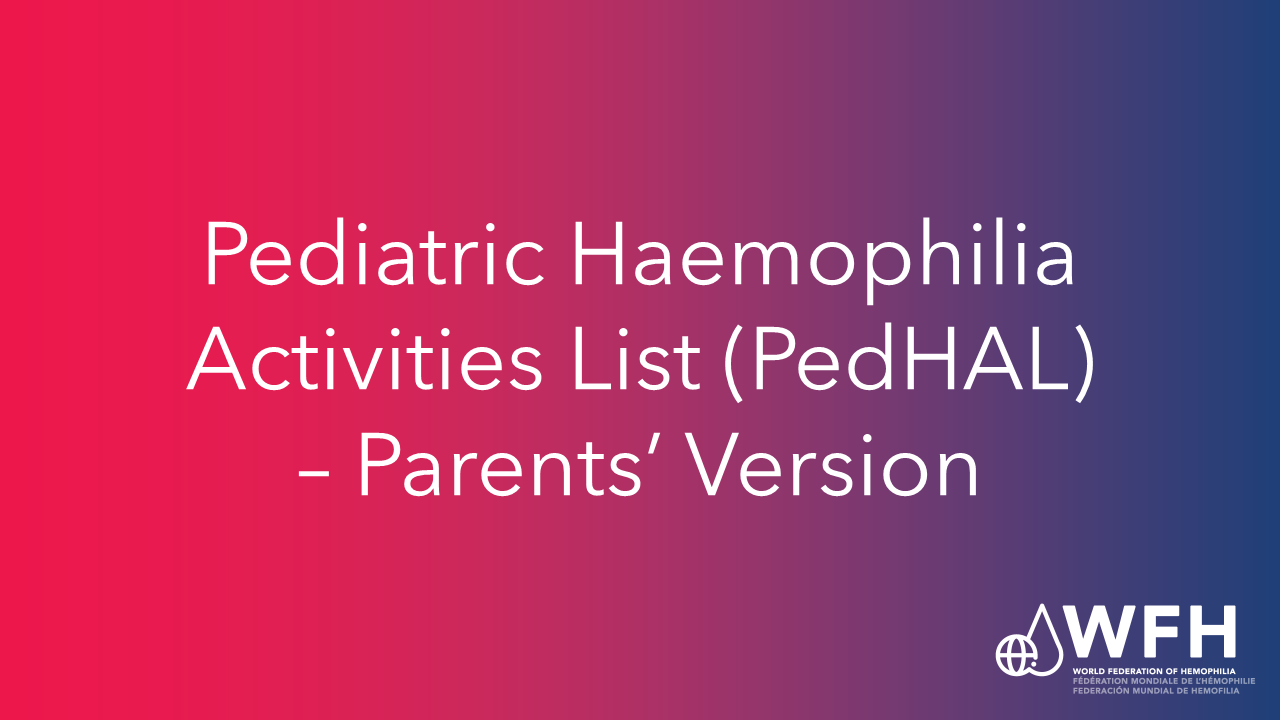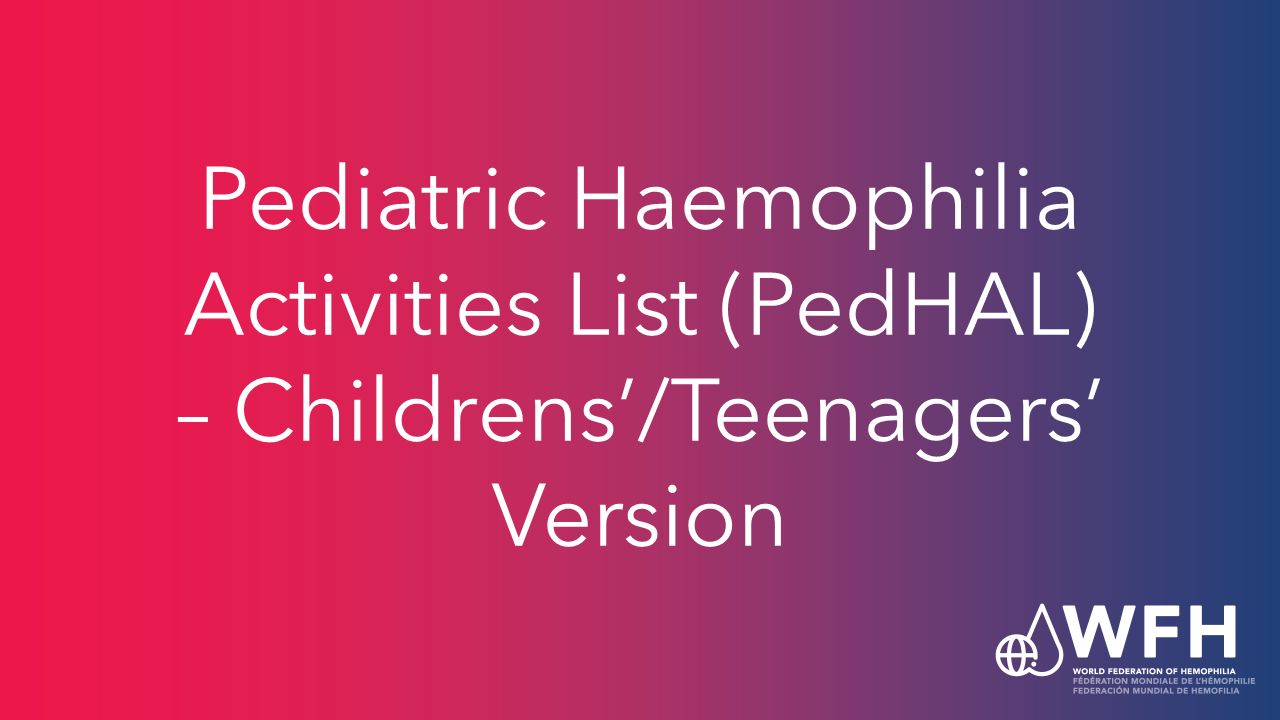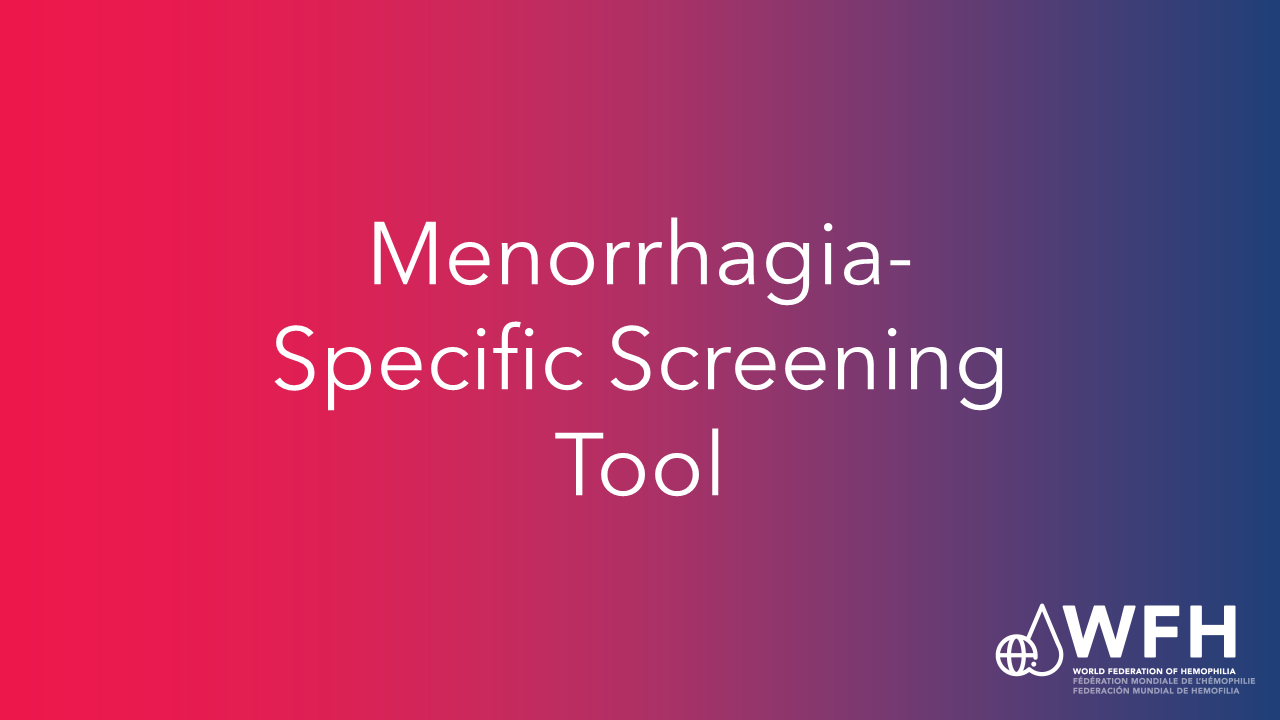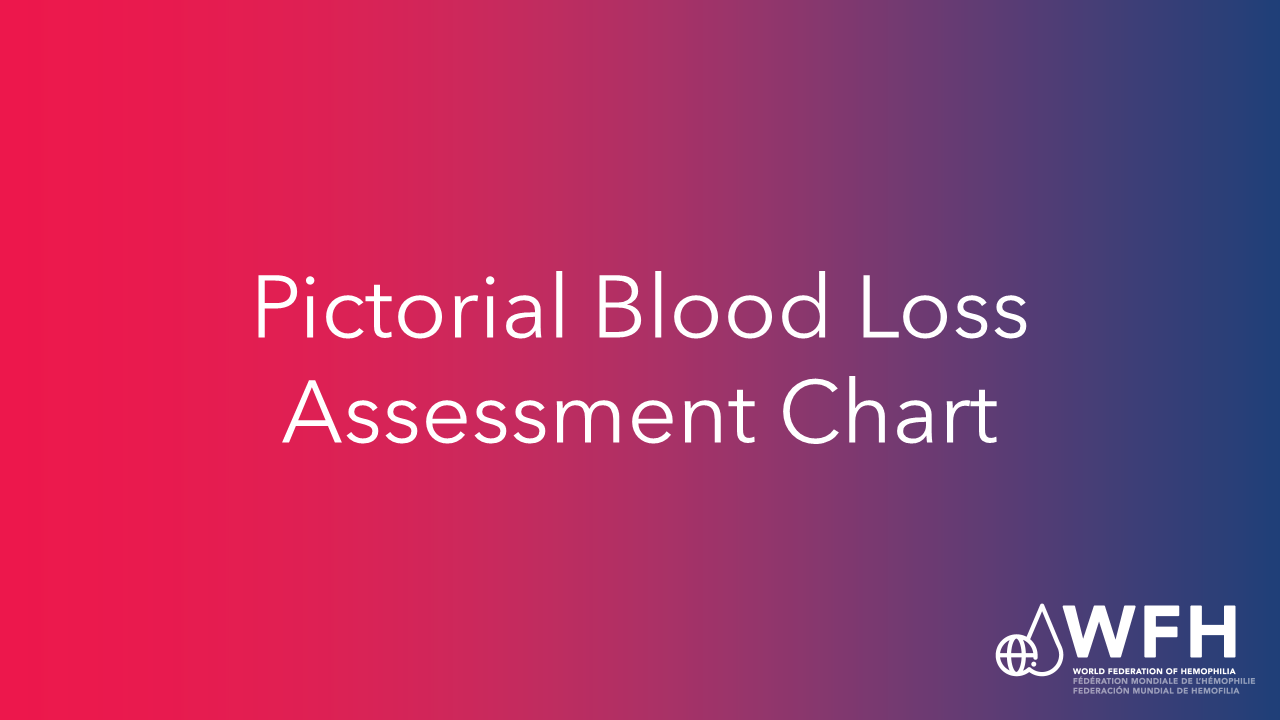
International Women’s Day Webinar | March 7, 2025
Listen to this 90-minute webinar presented on March 7, 2025, to learn about women and girls with bleeding disorders (WGBD).
Year: 2014
Language: English
Author(s): Various

Hemophilia is a rare disease and its management is multi-faceted. With advances in medical care including prophylactic factor replacement, the need for outcome assessment tools that are valid, reliable, sensitive to change, and predictive has become increasingly apparent. Physical status (joint health), functional ability, bleeding symptoms, and quality of life can now be measured using standardized tools. Ultrasound and MRI scores are also under development.
Many of these tools have been developed by working groups comprised of international experts, and have been tested in a variety of settings.
The purpose of this compendium is to provide hemophilia caregivers and researchers with an evaluation of new and existing assessment tools suitable for use in hemophilia. Adequate use of these tools will ultimately facilitate research and inform best practice.
Joints are among the most common sites of bleeding in patients with hemophilia. If inadequately treated, repeated bleeding will lead to progressive deterioration of the joints and muscles, severe loss of function due to loss of motion, muscle atrophy, pain, joint deformity, and contractures. Several hemophilia-specific scores are available to measure joint impairment and function, including activities and participation.
These scores can be used:
Working Group: Karen Beeton, Brian Feldman, Kathy Mulder, Pradeep Poonnoose, Janjaap Van der Net, and Nancy Young.
This score measures impairment of the joints most commonly affected by bleeding in hemophilia: the knees, ankles, and elbows. It is primarily designed for adults and children with established arthropathy.
The HJHS is also used to measure joint impairment. It is appropriate for monitoring joint change over time or assessing efficacy of treatment regimens in children receiving both prophylactic and on-demand therapy.
Developed as a performance-based assessment tool to objectively measure an individual’s functional ability, it is intended to measure what the person with disability is actually able to do.
This score is designed to measure the impact of hemophilia on self-perceived functional abilities in adults.
The pediatric version of this score should be selected to measure the impact of hemophilia on self-perceived functional abilities in children. The current version assesses the same seven domains as the HAL.
The laboratory diagnosis of mild and/or rare bleeding disorders is challenging. Due to the lack of clear inheritance for many of these disorders, there is strong reliance on bleeding histories, which are largely subjective.
There is great value in standardized quantitative scores for bleeding symptoms. In particular, they can be used:
Over the years, a number of tools have been developed to assist in the diagnosis of bleeding disorders, some general and some symptom-specific. This compendium provides evaluations of the tools most useful in current practice.
Working Group: Christoph Bidlingmaier, Magdy El Ekiaby, Joan Gill, Paula James (Chair), Sarah O’Brien, Roberta Palla, Flora Peyvandi, Margaret Rand, Christine Sabapathy, and Alok Srivastava.
This questionnaire can be used in the clinical setting to rule out VWD or to distinguish between types and severity of VWD in previously diagnosed patients.
This questionnaire is used to distinguish between types of VWD and to assess bleeding pattern and severity. Due to the time
required to complete it, it is used primarily in the research setting.
This questionnaire targets patients who are being evaluated for a bleeding disorder for the first time. It is used in children and adults suspected of having a mild bleeding disorder such as VWD or platelet function disorder.
This is a pediatric-specific bleeding questionnaire, based upon the MCMDM-1 VWD, used as a screening tool for VWD.
A short questionnaire designed to assist in the clinical diagnosis of mild inherited bleeding disorders such as VWD and rare coagulation factor deficiencies.
This tool is used to assess the severity of epistaxis and identify those who require further evaluation for a potential bleeding disorder.
A simple, pictorial tool used in women with menorrhagia to assess menstrual blood loss.
A short, easy-to-use, tool to help identify women with unexplained menorrhagia who require further laboratory investigations.
The WFH Bleeding Assessment Tools Working Group also evaluated a number of other scores, click here for a short description of each of these.

Listen to this 90-minute webinar presented on March 7, 2025, to learn about women and girls with bleeding disorders (WGBD).

Certified translations for the PedHAL are available in the following languages: Dutch, Flemish, French (Canadian and European), English (UK and

Certified translations for the PedHAL are available in the following languages: Dutch, Flemish, French (Canadian and European), English (UK and

Menorrhagia-Specific Screening Tool A3uthors/developersPhilipp CS, Faiz A, Dowling NF, Beckman M, Owens S, Ayers C, Bachmann G QuestionnaireScoring key N.B.:

Epistaxis Scoring System (ESS) Authors/developersKatsanis E, Luke K-H, Hsu E, Li M, Lillicrap D Scoring system N.B.: These scores are

Pictorial Blood Loss Assessment Chart (PBAC) Authors/developersHigham JM, O’Brien PMS, Shaw RW Chart N.B.: These scores are posted with the